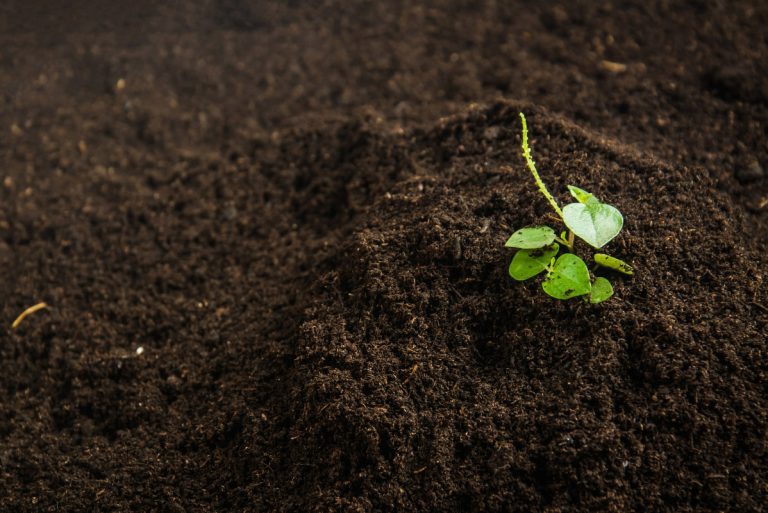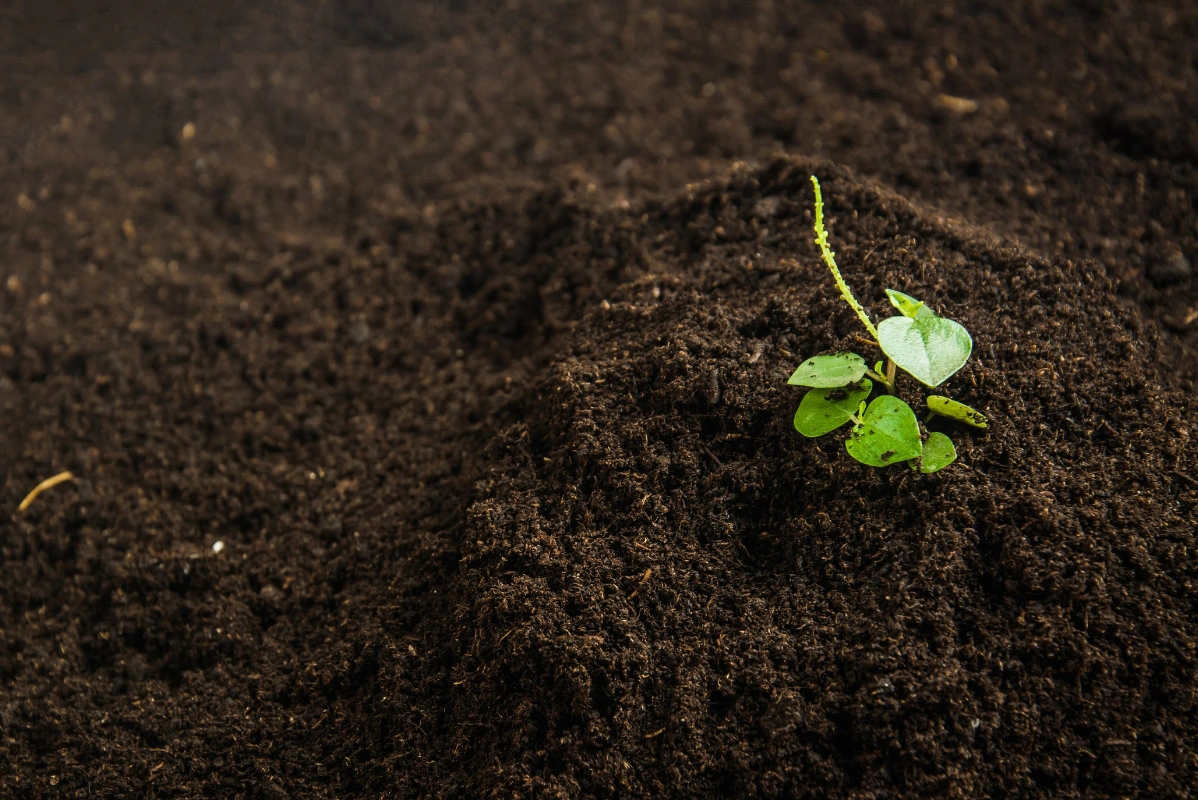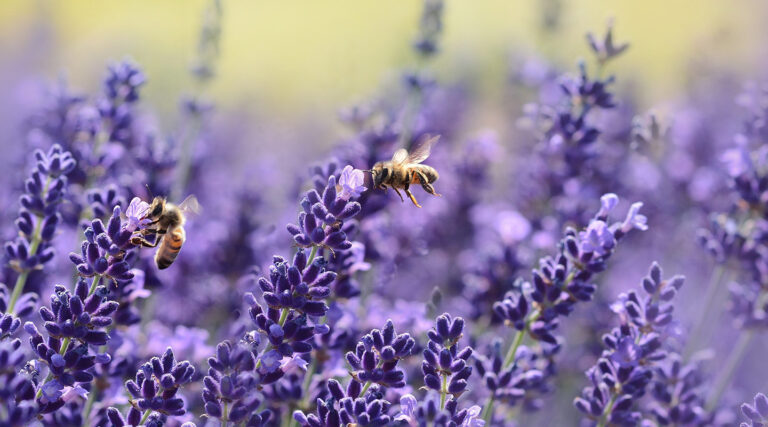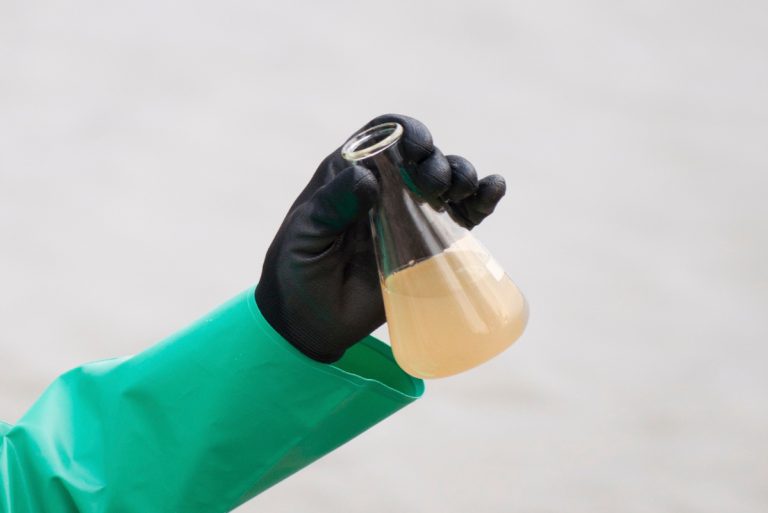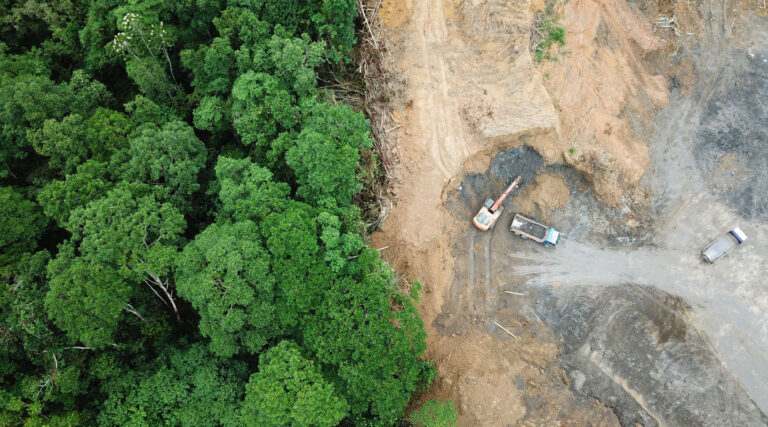The prevention of soil pollution is vital for human health, food production, and healthy ecosystems. Land contamination is a huge problem globally – an estimated 16% of all soil in China is polluted, and the EPA reports that there are up to 1.3 million sites classified as “contaminated lands” in the USA – so we must take immediate action.
17 actionable ways to prevent soil pollution (and keep it clean)
Human activities are causing various kinds of soil contamination, with major culprits including fertilizers and pesticides used in agriculture, the mining industry, waste disposal, and the improper handling of hazardous chemicals.
This has a range of implications for people and the planet, from risks to human and animal health to threatening our food supply, destroying forests and other habitats, and contributing to climate change.
If you want to learn more about soil pollution, its causes, and its impacts, take a look at our comprehensive guide here.
Thankfully, there are plenty of things we can do to prevent soil pollution on an individual, community, and political level. Let’s start with the big-picture policies and approaches, then look at actionable and easy steps you can take to make a difference.
1. Involve local communities in land and soil management
As with virtually all kinds of conservation, soil management is most effective when it involves governments, companies, and the local community. Protecting our precious land resources demands dedicated efforts and buy-in from all levels of society.
Therefore, it is essential to educate individuals and groups about the importance of soil conservation and what they should do to prevent land pollution. Equally, governments must listen to the voices of the local community and take the time to hear their concerns and ideas about land management.

People often have unique on-the-ground insights that can be invaluable for legislators and help them to create better laws and guidelines. Additionally, communities will be more likely to comply with the rules if they are created with their needs in mind.
2. Improve legislation on soil pollution control and prevention
Unfortunately, there need to be stronger laws in the US and elsewhere to prevent soil pollution. While companies, organizations, and communities are responsible for protecting the natural environment, the best way to ensure that they do this is through strict legislation.
Given the diverse causes of soil pollution, preventing it requires a range of laws and guidelines across various areas and at the state, federal, and international level.
These areas could include:
- Tighter controls on the transport, storage, and use of hazardous substances
- Permanent solutions for safe, long-term storage of nuclear waste
- Restrictions on the use of chemical pesticides and agriculture
- Incentives for organic farmers
- Bans on mining practices that release toxic dust or liquids into the environment
- Encouraging vertical cities to limit urban sprawl
- Laws to avoid food wastage, such as incentivizing companies to donate unneeded food through tax breaks
- A price on carbon to encourage industry to move away from fossil fuels and towards renewables
3. Adopt waste-to-energy practices
Waste-to-energy (WtE) is, in essence, turning trash into power. More specifically, it involves using waste treatment processes to generate energy, whether in the form of electricity, steam, heat, or fuels like diesel.
Industry can adopt WtE to power their facilities and municipalities can use it to run power stations that feed the grid 24 hours a day, just like a normal power plant, but completely clean, with no greenhouse gas emissions.

Many different types of waste can be used as fuel, including municipal solid waste (MSW), semi-solid effluents from industry, liquids such as domestic sewage, and gasses like refinery exhaust fumes.
The most common type of waste used in WtE is MSW, which represents an abundant and continual supply of fuel. Furthermore, it helps to prevent soil pollution by diverting solid waste from landfills, where it could disperse contaminants into the environment.
4. Conduct research on the soil environment quality baseline
In order to protect the health of the soil environment, it’s important to know where we stand. Therefore, one of the key steps in preventing soil pollution is to conduct research to get a clear picture of the current condition and quality of the soil.
Ground quality surveys give us a baseline that we can use to identify changes as early as possible and take the necessary action. This also means conducting regular surveys to monitor the situation and address any issues.
This work could be commissioned by local authorities, non-government organizations, or by establishing community-based monitoring networks of the quality of the soil environment. Strong networks with a suitable data-sharing process will make it easier to develop quick and effective solutions when problems emerge.
5. Implement soil remediation
Prevention is always better than cure, but when soil has been polluted, the responsible party should address this through remediation. If the company or person responsible isn’t willing or able to do so, local authorities should step in to repair the damage.
There are three methods that can be used to resolve soil contamination:
- Thermal remediation: This process uses heat to remove contaminants from the soil and groundwater. As the subsurface heats up, certain organic compounds mobilize, making it easy to remove these particles.
- Bioremediation: As the name suggests, bioremediation uses living organisms such as bacteria and other microbes. The microorganisms digest organic contaminants like solvents, phosphates, and hydrocarbons, converting them into carbon dioxide and water.
- Mycoremediation: This type of remediation uses fungi which remove contaminants like heavy metals by absorbing and metabolizing them.
6. Control mining and industrial pollution
Another essential part of preventing soil pollution is keeping a close eye on major polluters, such as mining, agriculture, and industry. Rather than introducing laws and leaving companies to get on with things, governments need to ensure that they’re following the rules.
This should involve formal monitoring, with detailed plans for supervision built into legislation to ensure key actors are complying with all rules and guidelines.
It could also be a good idea to conduct regular checks of the soil environment to make sure it is not contaminated – this could be done by the company and reported to the government or, better yet, by an independent expert.
Furthermore, as the carrot to this stick approach, governments can offer incentives to companies that implement eco- and soil-friendly practices. There are a wide range of ways to do this: examples include subsidies for organic producers and tax breaks for companies that install solar panels and other renewable energy systems.
7. Be strict when approving new uses of land
Soil pollution prevention is closely linked to how land is approved for new uses. It’s essential that governments carefully consider each application for land use, whether for construction, agriculture, mining, and industry, and weigh it up against possible environmental impacts, including implications for soil health.
Even residential construction can have a range of negative impacts on the soil, so it’s important for authorities to critically assess this use and whether it could lead to soil pollution. Furthermore, before giving approval, authorities should conduct detailed surveys on the current soil condition, and use this to set appropriate guidelines for management and control if the new land use does go ahead.
These surveys will also show if the soil is already contaminated, so that authorities can order a stop to any planned construction or use of the land until the situation is addressed and any risks eliminated.

8. Make companies pay for polluting
It’s not enough to simply have laws and guidelines in place that aim to avoid soil pollution. For these to be effective, there need to be consequences for anyone who breaks the rules.
Furthermore, these consequences should be harsh enough to be a true deterrent to wealthy companies. This could include steep financial penalties and even jail time for activities like illegal dumping, dispersing pollutants into the environment, use of prohibited chemicals, or unauthorized land use.
Another effective approach is having polluters pay the costs of treating and remediating contaminated land. This is a great way to directly hold companies responsible for the damage they cause and discourage repeat offenders, though is most effective if governments retain responsibility for creating plans for remediation and monitoring the results.
9. Promote research and development
Although we know a fair amount about the causes of soil pollution and how we can prevent it, more research is needed. Further research and development will allow us to develop better processes and more effective solutions to not only remediate contaminated soil but also stop it from being damaged in the first place.
This could include research into detecting soil contamination, new soil remediation techniques, and alternatives to pollutants like chemical fertilizers and pesticides, as well as the soil environment more generally and the impacts of soil pollution.

Source: ResearchGate / Souza L. et. al (2020)
Unfortunately, research dollars are all too often spent on areas of commercial or military priority, rather than concepts and technologies that could benefit the environment.
Governments and companies alike should take a farsighted approach instead, and support research that promotes sustainability. After all, the long-term health of the planet is essential for the economy, human health, and all aspects of life as we know it.
10. Go organic
Conventional agriculture is one of the biggest causes of soil pollution through the use of chemical fertilizers, pesticides, herbicides, and insecticides which contaminate the soil with a range of toxic components. Modern farming also typically involves the use of heavy machinery that can damage the earth.
Finally, overgrazing is all too common: in seeking higher and higher profits, producers pack farm too many animals on each piece of grazing land. The large concentration of animals strips the plants and nutrients from the soil, causing permanent damage over the long term.
Organic farming is all about returning to more traditional and eco-friendly practices that are kinder to the soil and the environment in general, as well as being safer for human health.
Organic producers do not use any of the following:
- synthetic fertilizers and pesticides
- genetically modified organisms (GMOs)
- artificial preservatives
- artificial flavors or coloring.
Instead, they rely on natural fertilizers like manure and compost, natural methods to control pests, and keep weeds under control through crop rotation, mulching, tilling, and hand weeding.

Organic farmers also only feed animals only organic food, don’t give them antibiotics or hormones, and keep them in an environment that is suitable to their natural behaviors, instead of being confined in small areas. You can be confident that a product is truly organic if it carries a recognized, independent certification such as USDA, NSF, and GOTS.
Buying sustainable food is one of the best things you can do as a consumer to prevent soil pollution. Not only to you avoid products that directly contribute to ground contamination, but by supporting organic brands you’re sending a message to other producers.
If enough people shop organic, the industry will shift towards organic methods to meet consumer demand. You could even grow your own organic herbs and veggies at home with an Aerogarden or vertical farm.
Buying organic products isn’t just limited to food: there are a range of textiles, personal care products, and cosmetics that contain materials or ingredients that can damage the soil, depending on how they’re produced.
To prevent soil pollution, shop organic when it comes to:
- All foodstuffs, but notably fruits, vegetables, meat, grains, seafood, and animal products
- Cosmetics such as face masks, cleaners, and makeup
- Shampoo, body wash, bubble bath, and other personal care products
- Natural textiles like cotton, wool, bamboo, and hemp (many bamboo and hemp products are organic, but it’s good to check)
- Furniture, rugs, and home décor products made from natural materials such as cane and bamboo
Equally, if you choose to buy wooden furniture or anything else made from wood or tree products, check that it’s sustainably sourced. This ensures you’re not supporting deforestation and that the plantations the wood comes from are handled responsibly to avoid polluting the soil.
11. Dispose of solid waste properly
Solid waste is a major cause of soil pollution. When virtually any type of waste isn’t disposed of correctly, it can disperse pollutants into the environment: as it breaks down, the material may give off harmful gasses, leach toxins into the soil, or particles can wash into waterways.
Even if these contaminants aren’t directly released into the soil, they may make their way there eventually, whether carried by rivers, absorbed through the atmosphere, or traveling through groundwater.
For this reason, it’s important to responsibly dispose of all of your waste, especially potentially-hazardous materials, such as batteries, light bulbs, metal items, propane tanks, and pharmaceuticals.
At a government level, authorities can encourage practices to treat both solid waste and wastewater to avoid it leading to pollution. This includes practices such as neutralizing acidic and alkaline waste, and separating biodegradable trash to break it down in a controlled environment.
12. Slash the waste you produce
Responsibly disposing of your waste is important, but an even better solution is to reduce the amount of waste you produce in the first place. Even when you send it to landfill, regular household waste can produce a range of pollutants that can contaminate the soil and groundwater.
Recycling is a good place to start. In 2018, US households collectively produced nearly 300 million tons of solid waste, of which only 70 million tons were recycled.
Make sure you recycle everything you possibly can and prep it properly first, such as rinsing out bottles and food containers. Failing to do this can mean the entire load of recyclable items are sent to landfill – so check the rules with your local sanitation department.
Many materials are recyclable, including plenty that you probably didn’t realize you could recycle. Check out our guides to recycling things like broken glass, food containers, and aluminum foil to learn how.

Another great approach is to buy zero-waste products, from toilet paper and shampoo to deodorants and toothpaste. These items are free from plastic, from the materials they’re made from to their packaging, instead using materials that can be recycled, composted, or reused.
Additionally, try to repair items as much as possible rather than replacing them: darn that small hole in your socks, sew in a new zipper, or put a patch on your jeans. Take your electronics and home appliances to a licensed repair shop, or have a cobbler resole your shoes or repair your damaged purse.
Finally, you can reduce your waste by taking action at the beginning of the cycle. Buying fewer things will ultimately mean you produce less waste. Carefully consider whether you really need something before you purchase it and develop a capsule wardrobe of eight to 10 pieces per season – we really don’t need so much stuff in our lives!
13. Get composting
Even organic waste can produce contaminants when it decomposes in landfill. On the other hand, when you compost your food scraps and other organic waste, it breaks down with minimal impact, turning into excellent organic fertilizer perfect for nourishing your garden plants.
Organic matter can’t decompose normally in landfill because it doesn’t have enough oxygen, so it rots anaerobically, releasing large amounts of methane. In compost, it breaks down aerobically, as nature intended, releasing smaller amounts of carbon dioxide – although this is also a greenhouse gas, methane’s global warming potential (GWP) is significantly higher.
In this way, composting at home can help avoid pollutants being released from landfills and potentially contaminating the soil. You can compost even if you don’t have a big yard: learn about composting in an apartment here.

While composting is an excellent way to deal with your organic trash, it’s critical to limit the amount of waste you produce in the first place, especially when it comes to food. Wastage represents a staggering 30 to 40% of the US’ food supply.
This means acres and acres of land used to grow unneeded food, potentially polluting the soil in the process. Be careful to only buy as much food as you need, check your fridge and pantry daily and use items that are about to expire, and freeze things that you won’t eat immediately.
14. Minimize chemical use
The modern American household is full of chemicals, from cleaning products and air fresheners to motor oil and laundry detergent.
Simply using these products can pollute the environment: when you spray aerosols, fine particles dissipate into the atmosphere. Similarly, washing cleaning products, body wash, or shampoo down the drain can send a host of toxins and even microplastics into the sewage system.
These particles can eventually make their way into the soil, whether absorbed from the air, groundwater, or through waterways.
In the US, waste-water treatment only removes some chemicals from sewage: around half of all pharmaceuticals and “newly emerging contaminants” remain after treatment to be released into waterways, according to Scientific American.
Instead of using chemical-based cleaners and other household products, opt for alternatives made from natural, non-toxic ingredients. For example, take a look at these chemical-free laundry detergents.
If you can’t avoid using certain chemicals, be sure to handle them carefully and dispose of them responsibly. Never throw hazardous materials or pharmaceuticals in the trash our pour liquids down the drain, instead, contact your local sanitation department and ask how to dispose of them responsibly.
15. Spread the word
Taking a few steps yourself and changing your habits can go a long way to help prevent soil contamination. However, you can multiply your impact exponentially by educating others about the causes and impacts of this type of pollution, as well as what they can do about.
Start by learning all you can about the issue: check out websites like World Soil Information, Science Direct, and the United Nations Food and Agriculture Organization, or read books such as Earth Detox, The World We Need, and The Monsanto Papers. There are also some great documentaries and movies that educate and inspire, such as The 11th Hour, Home, Michael Clayton, and Erin Brockovich.
From there, spread the word among your networks. Talk to your friends and family, share posts on social media (you can start with this one!), and teach your children eco-friendly behaviors.
You could even volunteer with local organizations that educate the community about soil pollution or related issues.
16. Lobby your representatives
Even if you aren’t in a position to implement new legislation or policies, you can use the democratic system to drive change. Get in touch with your elected representatives at all levels – local, state, and federal – and tell them how important soil pollution prevention is to you.
Pressure them to introduce laws that protect the soil environment, as well as mechanisms to ensure that everyone complies with these rules. You can also encourage them to be tougher on companies and groups who cause soil pollution, and to fund research and development that will promote better soil environments.
17. Join campaigns
If you really care about soil pollution, why not get involved? Many groups and organizations are working on protecting the soil environment and associated issues, from groundwater safety to protecting forests and other wilderness areas.
The organizations working on these issues include:
- World Wildlife Fund
- Groundwater Foundation
- The Nature Conservancy
- The Land Institute
- Asia Soil Conservation Network
- African Forest Landscape Restoration Initiative
- Kiss the Ground
There are loads of ways you can get involved in these campaigns, depending on the amount of time and energy you’re able to give. It could be something as simple as signing a petition or sharing a campaign on social media, or you may want to become a volunteer and advocate for the cause.
How to do your part to prevent soil pollution
The prevention of soil pollution is everyone’s responsibility. This is a critical issue that can have a wide range of negative impacts on people, animals, and the environment, from posing a risk to human health to threatening natural habitats and even the global food supply.
Therefore, it’s essential that we take action to remediate already contaminated areas and prevent further pollution, as individuals, companies, and responsible authorities. At a political level, essential actions include introducing legislation to prevent soil pollution and hold polluters accountable, funding research, involving local communities, and improving waste management systems, including incorporating waste-to-energy approaches.
As individuals, living more sustainable lifestyles, from better managing our waste to avoiding chemicals and buying organic products, will go a long way to prevent all kinds of further damage to the environment, including soil pollution. We can also educate others and advocate for change, whether lobbying our politicians, joining campaigns, or both!
For more pointers on how to live an eco-friendly lifestyle, check out our introduction to zero-waste or our post on solar panels to power your home with renewable energy.
